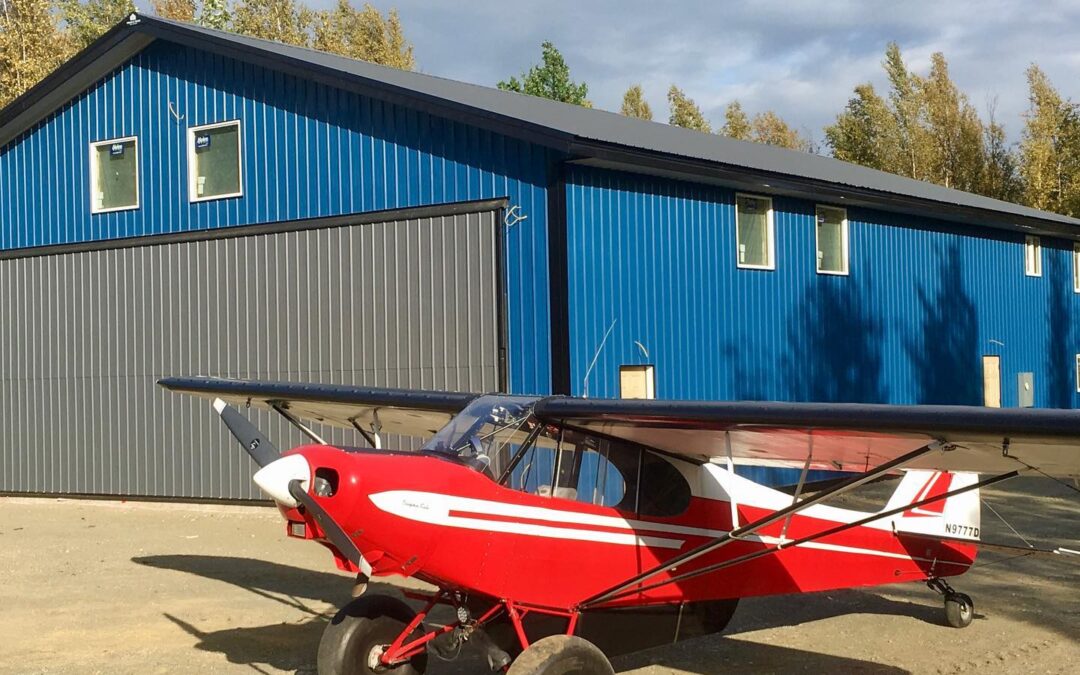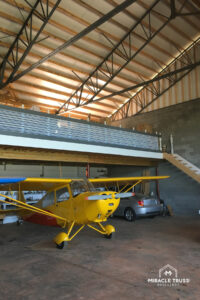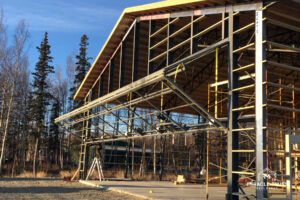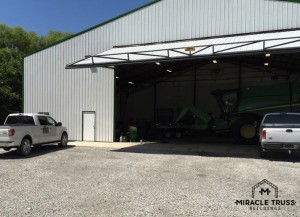Designing the Perfect Hangar for Your Aircraft
For aircraft owners and enthusiasts, a hangar is more than just a storage space—it’s a sanctuary for their prized possession, providing protection, maintenance, and a sense of pride. However, designing the perfect hangar requires careful consideration of the unique shape and dimensions of the aircraft, as well as maximizing space, minimizing costs, and ensuring ease of maintenance. In this blog, we’ll explore the key considerations for designing a hangar that optimally accommodates aircraft dimensions while maximizing return on investment through asset protection, cleanliness, safety, and sustainability.
 Section 1: Tailored Design for Aircraft Dimensions
Section 1: Tailored Design for Aircraft Dimensions
Accommodating Odd Shapes
The first step in designing a hangar is to carefully consider the dimensions and shape of the aircraft it will house and the type of hangar you want: maintenance hangar? Storage hangar? T- Hangar? Shade Hangar? All of the above? . Aircraft wings and tails often have unique configurations that require specialized accommodation. By incorporating features such as wide doors, high ceilings, and ample maneuvering space, you can ensure that the hangar provides a comfortable fit for the aircraft while minimizing the risk of damage during entry and exit.
Optimal Use of Space
Maximizing the use of available space is essential for efficiency and cost-effectiveness. Well-thought-out design features, such as adjustable storage racks, mezzanine levels, and compact storage solutions, can help make the most of every square foot. By optimizing space utilization, you can minimize construction costs and ensure that the hangar meets your needs both now and in the future.
 Section 2: Cost Efficiency and Minimal Maintenance
Section 2: Cost Efficiency and Minimal Maintenance
Smart Material Selection
Choosing durable, low-maintenance materials is key to minimizing long-term upkeep costs. From corrosion-resistant steel to easy-to-clean surfaces, selecting materials that can withstand the elements and require minimal maintenance will help keep operating expenses in check. Additionally, investing in energy-efficient insulation and lighting can further reduce ongoing costs while enhancing sustainability.
Streamlined Maintenance Features
Incorporating convenient maintenance features into the hangar design can help streamline upkeep tasks and prolong the lifespan of the aircraft. Features such as built-in drainage systems, easy-access service pits, and dedicated workspaces for repairs and inspections can save time and labor, reducing overall maintenance costs and ensuring that the aircraft remains in optimal condition.
 Section 3: Maximizing Return on Investment
Section 3: Maximizing Return on Investment
Asset Protection and Security
At its core, a hangar is an investment in the protection and preservation of the aircraft it houses. By providing a secure, climate-controlled environment, the hangar helps safeguard the asset from damage caused by weather, vandalism, and theft. Additionally, implementing advanced security measures, such as surveillance cameras and access control systems, further enhances asset protection and peace of mind.
Clean, Safe, and Sustainable Space
A well-designed hangar not only protects the aircraft but also provides a clean, safe, and sustainable workspace for service and preservation. By incorporating features such as environmentally friendly materials, energy-efficient systems, and proper ventilation, you can create a healthier and more comfortable environment for maintenance personnel while reducing the hangar’s environmental footprint.
Conclusion: Designing the perfect hangar for your aircraft requires careful consideration of aircraft dimensions, space utilization, cost efficiency, and maintenance requirements. By prioritizing tailored design features, cost-effective materials, and streamlined maintenance solutions, you can create a hangar that optimally accommodates your aircraft while maximizing return on investment through asset protection, cleanliness, safety, and sustainability. Whether you’re a private pilot or a commercial operator, investing in a well-designed hangar is an investment in the long-term preservation and enjoyment of your aircraft for years to come.


 Section 1: Tailored Design for
Section 1: Tailored Design for  Section 2: Cost Efficiency and Minimal Maintenance
Section 2: Cost Efficiency and Minimal Maintenance Section 3: Maximizing Return on Investment
Section 3: Maximizing Return on Investment

